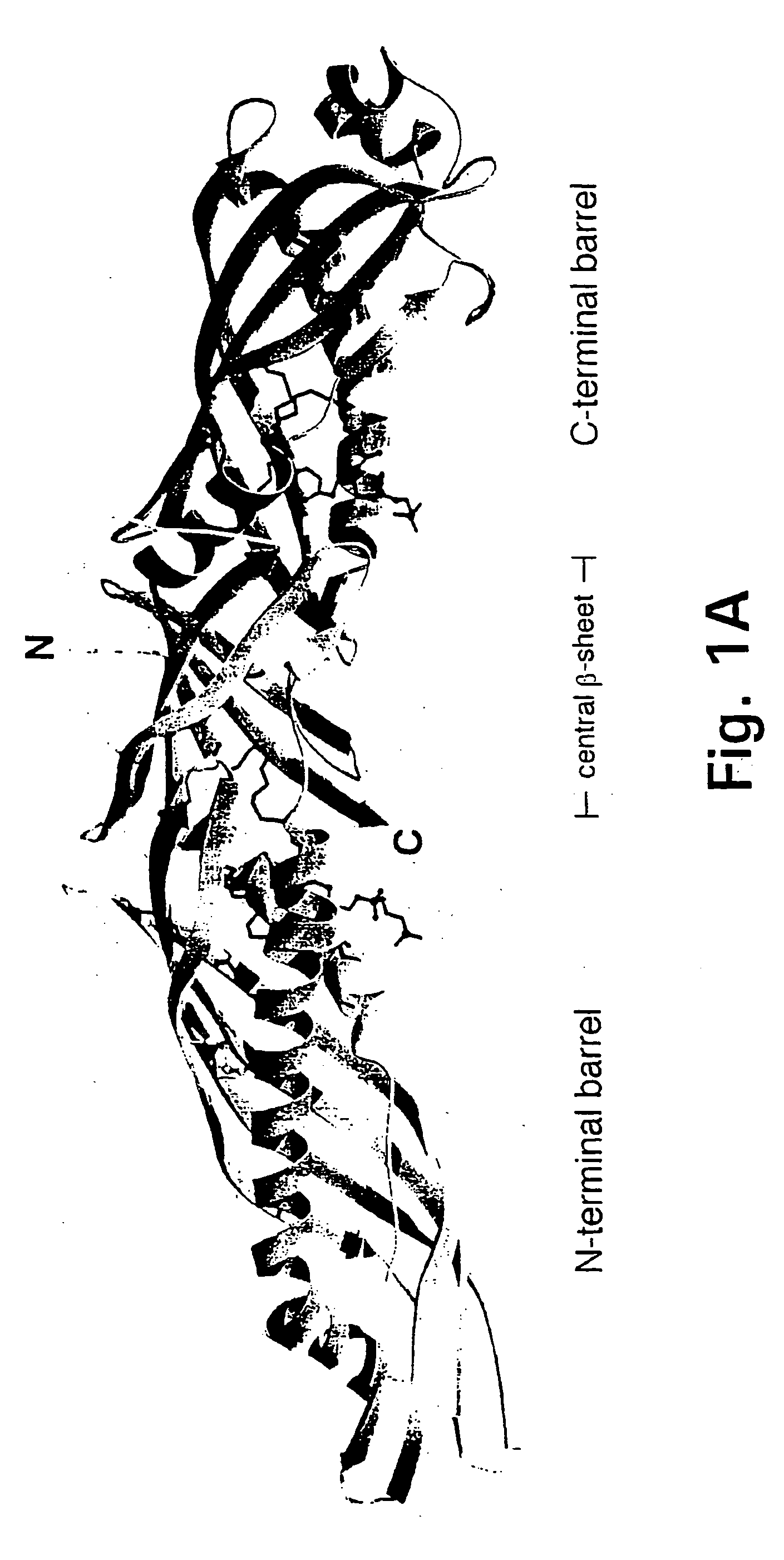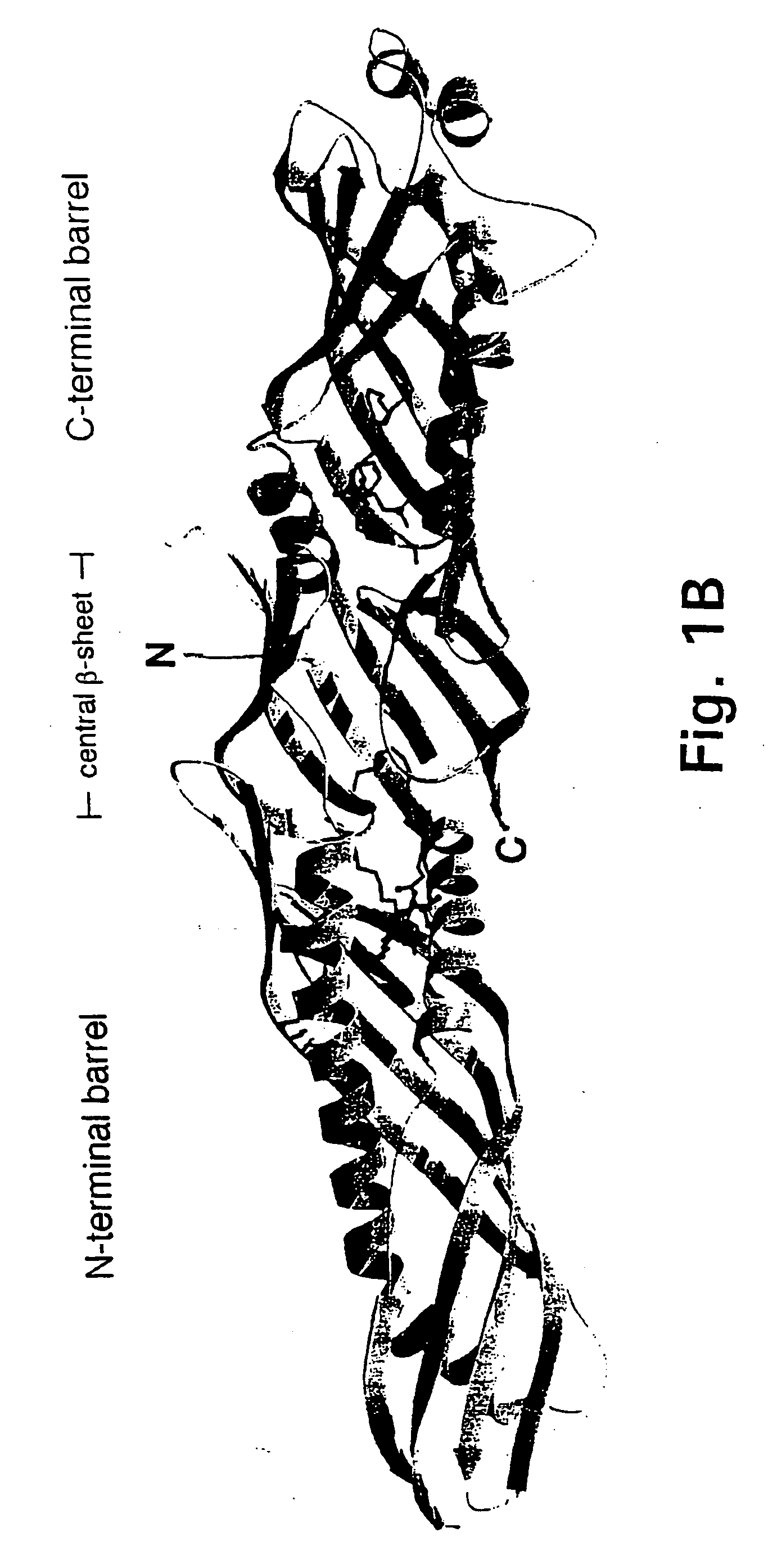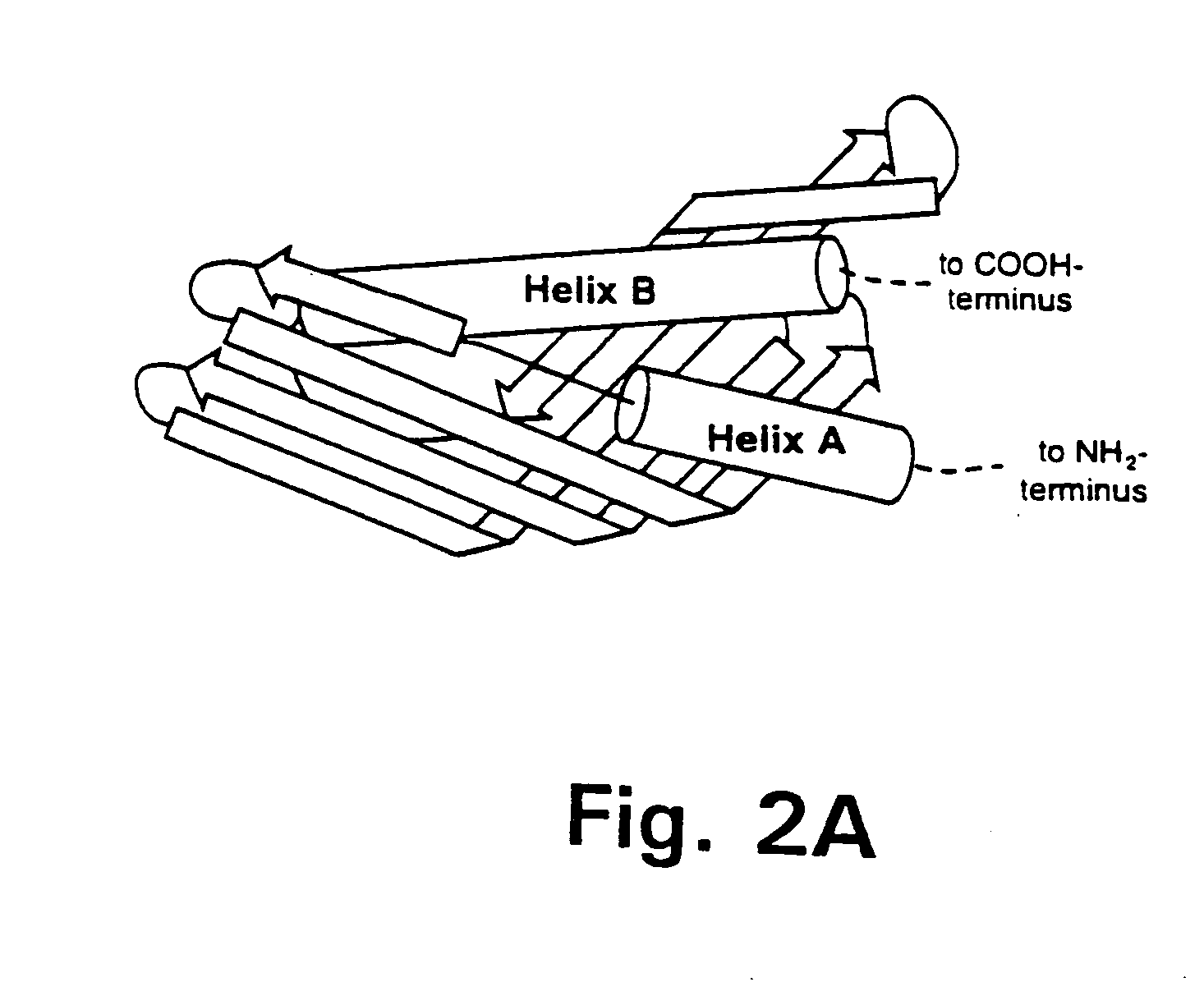Bactericidal/permeability-increasing protein: crystallization, x-ray diffraction, three-dimensional structure determination, rational drug design and molecular modeling or related proteins
a permeability-increasing protein and bactericidal technology, applied in the field of bactericidal/permeability-increasing protein, can solve the problems of cell death, altering the permeability of the cell's outer membrane, etc., and achieve the effects of reducing the number of bacterial permeabilities, and improving the specificity or activity
- Summary
- Abstract
- Description
- Claims
- Application Information
AI Technical Summary
Benefits of technology
Problems solved by technology
Method used
Image
Examples
example 1
Preparation and Purification for Crystallization Construction of Plasmids Containing BPI (S351A)
[0153] BPI contains a single N-linked glycosylation site at the asparagine at position 349 which was eliminated by genetic engineering of the DNA sequence of BPI as follows. For glycosylation to occur at this position, the asparagine must occur within the sequence Asn-X-Ser / Thr where X can be any amino acid, except proline. N-linked glycosylation can be eliminated by either changing the Asn to another amino acid such as glutamine or by changing the serine or threonine to an alternate amino acid. The latter strategy was used to construct vectors containing BPI with an alanine at position 351 instead of serine.
Construction of Plasmids for BPI Expression
[0154] The plasmid pIC108 containing a cDNA encoding BPI cloned in a T3T7 plasmid (Clontech, Palo Alto, Calif.) served as the starting point for the construction of a vector for expression of nonglycosylated rBPI in mammalian cells.
[0155...
example 2
Structure Determination of a Crystallized BPI Protein
[0168] Presented herein is the crystal structure of BPI and two bound phospholipids at 2.4 Å resolution. Our model provides the first structural information on the LPS-binding and lipid transport protein family and suggests a common mode of lipid binding for its members.
[0169] Purified, full-length, non-glycosylated, recombinant human BPI expressed in CHO cells was crystallized by hanging-drop vapor diffusion at room temperature. The protein concentration was 8.5 mg / ml and the crystallization buffer contained 12% (w / v) PEG 8000, 200 mM magnesium acetate, and 100 mM sodium cacodylate, pH 6.8. Two crystal forms with slightly different cell dimensions grew under the same conditions in space group C2, with one molecule per asymmetric unit. Form 1 crystals were reproducible and had cell dimensions of a=185.0, b=37.2, c=84.3 Å, and β=101.3°. Form 2 crystals appeared rarely and had cell dimensions of a=185.6, b=33.0, c=85.2 Å, and β=10...
example 3
Molecular Modeling of BPI Ligands and Mimetics
[0181] We have used the information derived from the X-ray crystal structure of BPI presented herein, along with the teachings of the art, including, for example, WO94 / 20532 (PCT / US94 / 02465) to design various BPI-related proteins and peptides. These constructs may be divided into categories as illustrated below, including peptides and proteins, including fragments, analogs and variants of the protein, since they best describe the different ways in which different domains and portions may be assembled to achieve new molecules.
[0182] 1. Individual Peptide Domains: The overlapping BPI peptide data indicated that the N-terminal domain of BPI contains at least three independent functional domains that have one or more of the biological activities of BPI, including, for example, antibacterial, antifungal, anti-heparin and anti-angiogenic activities. Domain I is a region of amino acid residues from about 17 to about 45; Domain II is a region ...
PUM
| Property | Measurement | Unit |
|---|---|---|
| molecular weight | aaaaa | aaaaa |
| concentration | aaaaa | aaaaa |
| concentration | aaaaa | aaaaa |
Abstract
Description
Claims
Application Information
 Login to View More
Login to View More - R&D
- Intellectual Property
- Life Sciences
- Materials
- Tech Scout
- Unparalleled Data Quality
- Higher Quality Content
- 60% Fewer Hallucinations
Browse by: Latest US Patents, China's latest patents, Technical Efficacy Thesaurus, Application Domain, Technology Topic, Popular Technical Reports.
© 2025 PatSnap. All rights reserved.Legal|Privacy policy|Modern Slavery Act Transparency Statement|Sitemap|About US| Contact US: help@patsnap.com



